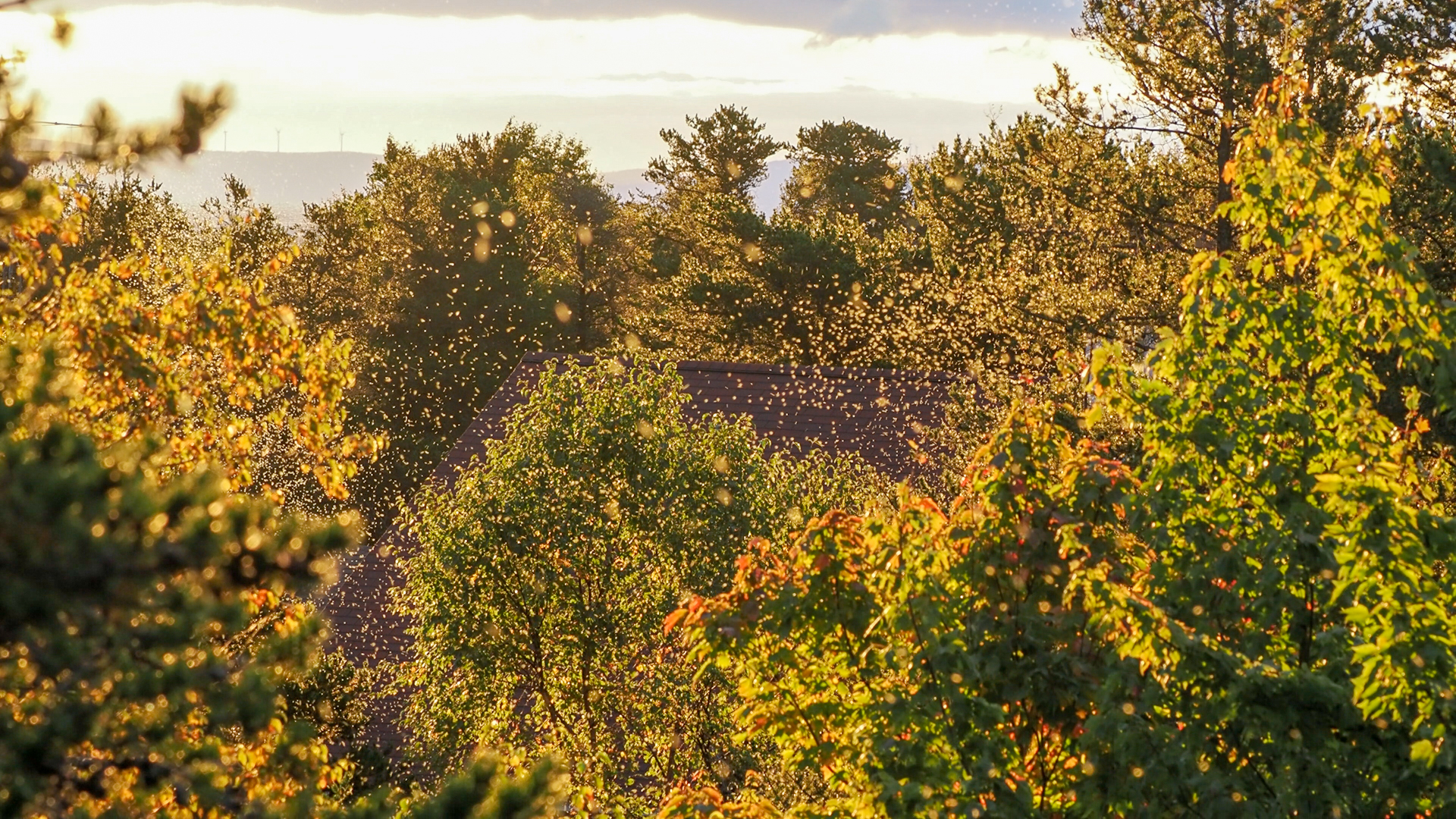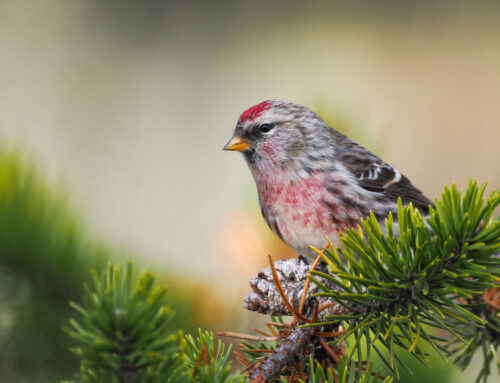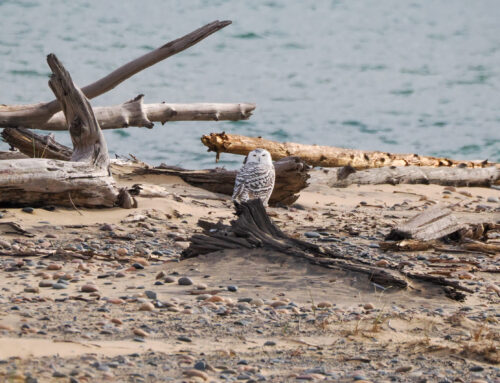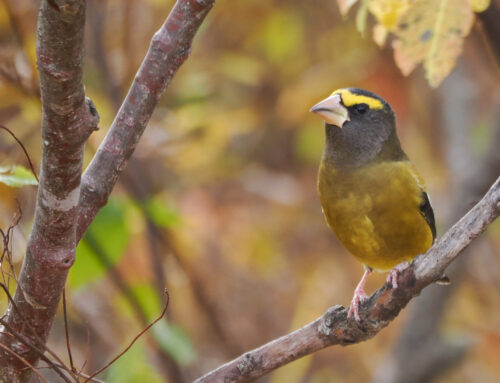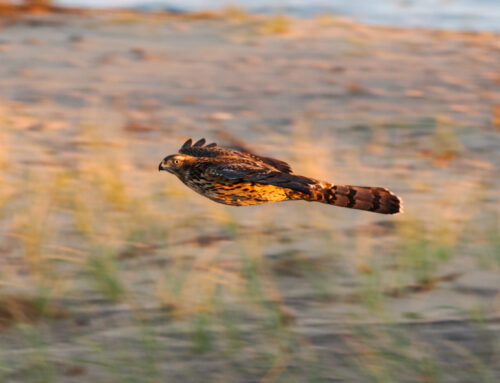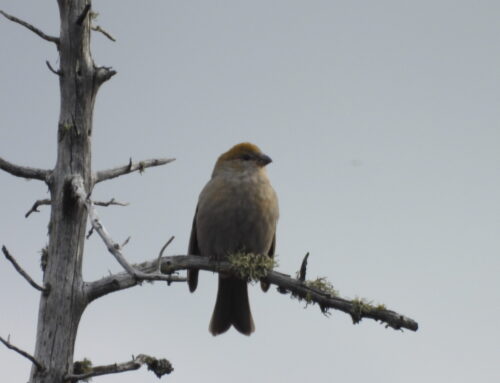This past week brought a true mix of fall weather to Whitefish Point. Temperatures hovered mostly in the mid-40’s to mid-50’s, though Wednesday morning (Oct. 8th) dipped into the 30’s. Strong southeast winds dominated much of the week, but shifted to the north for a day beginning Thursday night (Oct 9th) before swinging back towards the south for the rest of the weekend. The northern winds coincided with daylong rain on Friday, but otherwise the week provided some clear, cool mornings, excellent birds, and stunning views of the Point wrapped in peak fall color.
The strong push of northerly winds Thursday night into Friday appeared to move many of the lingering migrants out of the area, but the weekend brought a major influx of Black-capped Chickadees in return. All weekend long the jack pines rang with their soft whistles and jumbled ‘chick-a-dee’ calls as restless flocks darted through the trees. Flocks numbering 50+ birds at times moved actively out towards the end of the Point, then hesitated as if deciding whether to cross Lake Superior to the east or continue south along the shoreline. Dark-eyed Juncos and Purple Finches remained in steady numbers, while Blue Jays and American Robins decreased compared to previous weeks, marking another clear step in the progression toward late-fall migration.
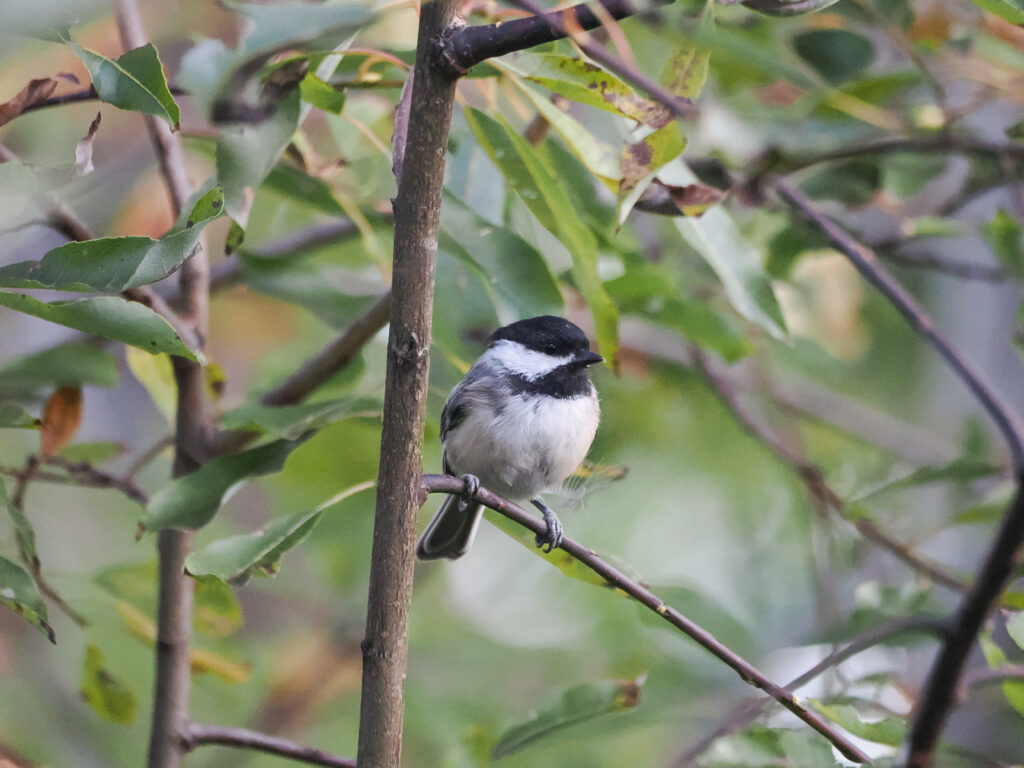
Chickadees galore this weekend, but no Boreal Chickadees have been found thus far. Photo by Clay Bliznick.
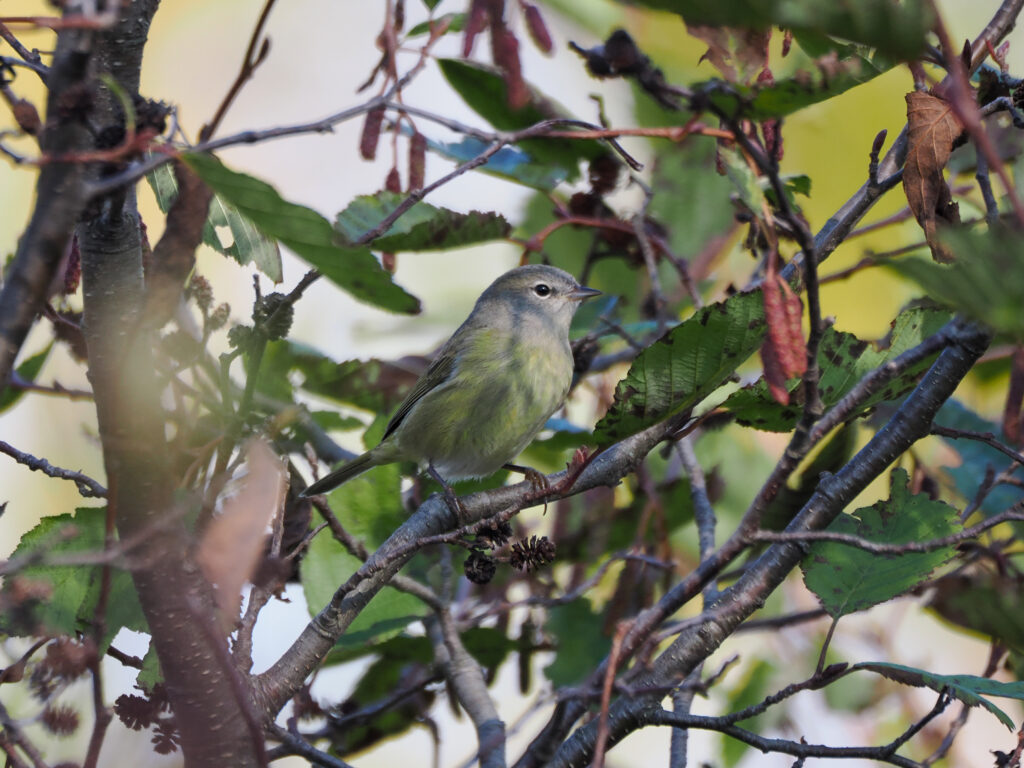
One of the late-season warbler species of Michigan, Orange-crowned Warbler, are still present around the Point. Photo by Clay Bliznick.
The week’s most exciting discovery was a Yellow-billed Loon seen during the waterbird count on Oct. 11th. The bird flew past us roughly 150–200 meters offshore and was observed by myself, Frank Fabbro, and three others. This represents only the third record for the state of Michigan and one of few documented adult, breeding-plumage individuals in the Lower 48 states (See Frank’s photos on his blog!). Other notable finds included a LeConte’s Sparrow discovered on Oct. 7th along the sandy beach-access trail near the parking lot, plus a Bohemian Waxwing seen briefly on both the 11th and 12th that added some more northern flair to the week’s sightings.
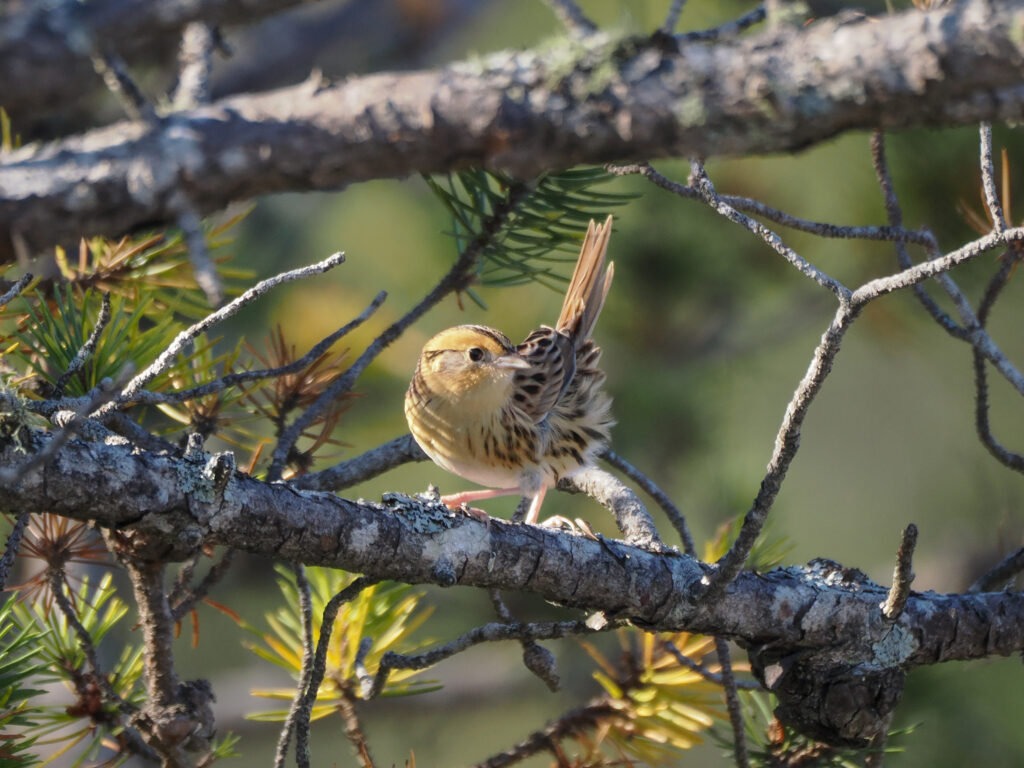
The LeConte’s Sparrow from the 7th did pop up for a brief photo op. Photo by Clay Bliznick.
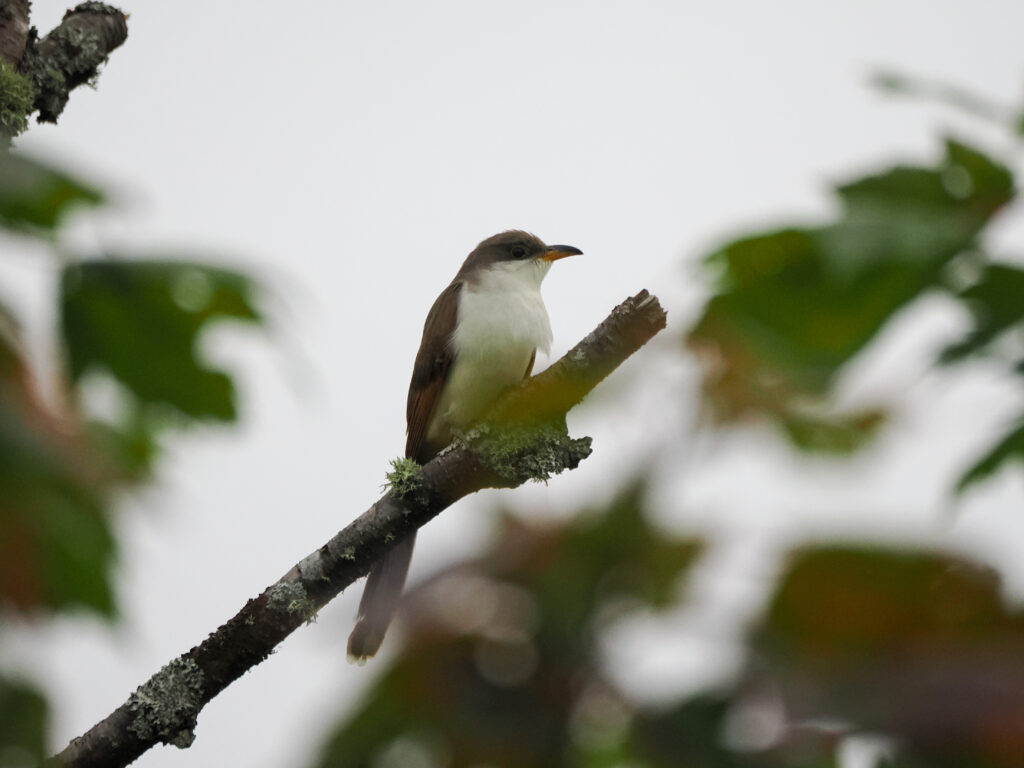
One of a couple late Yellow-billed Cuckoos (our other Yellow-billed species besides the loon!) that seemed to disappear with the Thursday night wind shift. Photo by Clay Bliznick.
Weekend bird walks drew small but enthusiastic groups, giving everyone a chance for close views of several great species. Besides a cooperative American Golden-Plover that stuck around on the beach for walk participants on both Saturday and Sunday, timely stops at the waterbird count yielded us two flyby Harlequin Ducks on Saturday and a juvenile Parasitic Jaeger on Sunday. The feeders near the observatory remain busy with White-crowned Sparrows, a few American Goldfinches and Pine Siskins, as well as several flashy male Purple Finches.
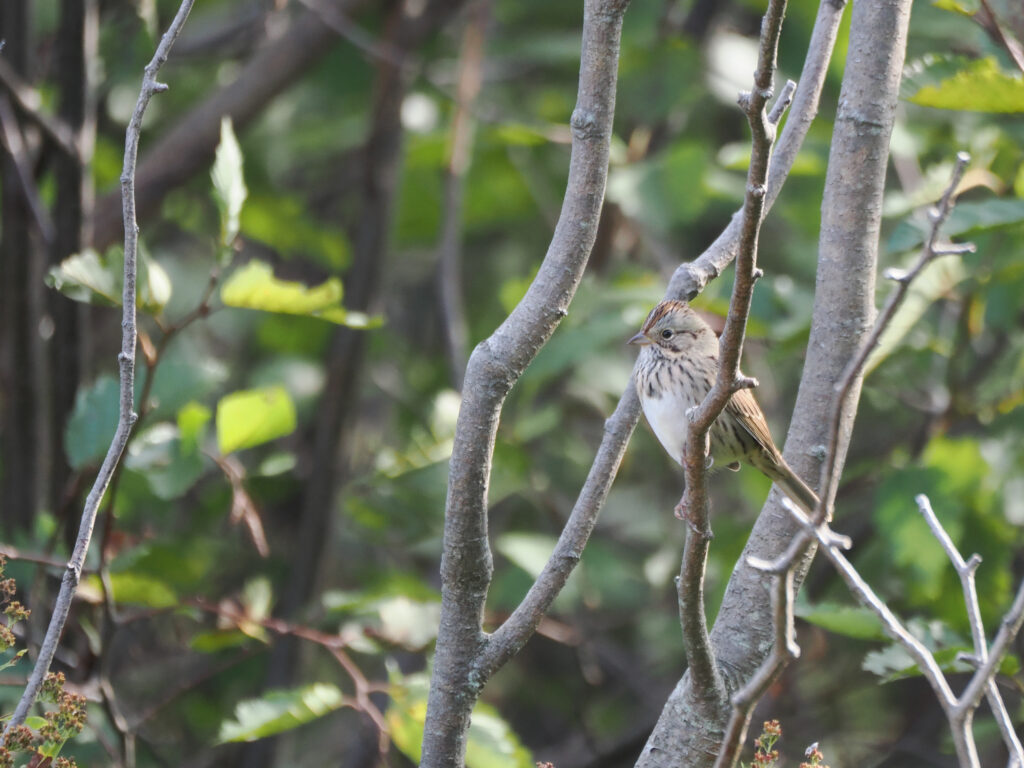
Among the visiting White-crowned Sparrows, a nice Lincoln’s Sparrow has been hiding out near the feeders. Photo by Clay Bliznick.
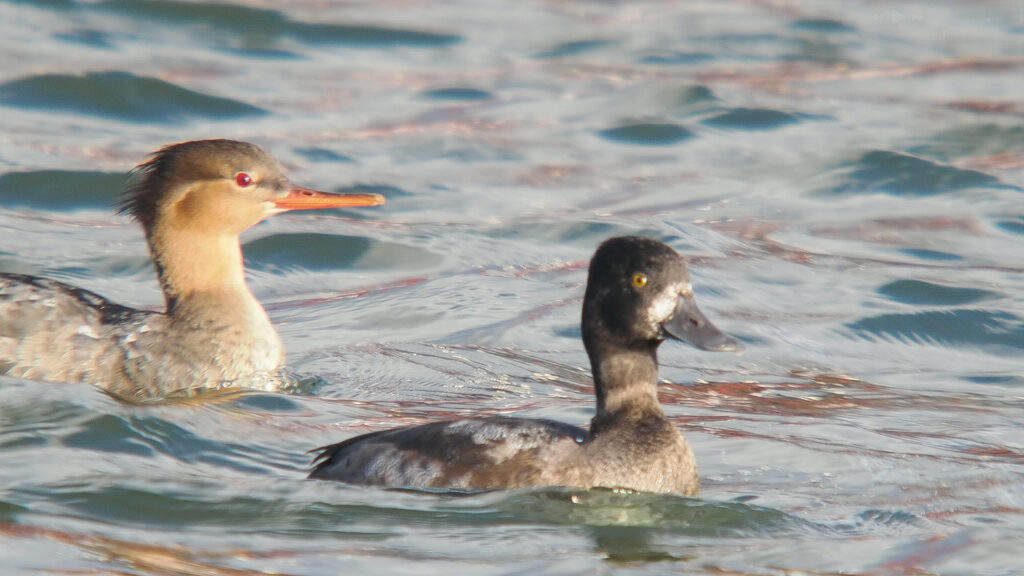
We’ve had a few more ducks sheltering from the wind inside the harbor like this Lesser Scaup and Red-breasted Merganser. Photo by Clay Bliznick.
The landscape here is just now getting into its most colorful point of the season and it should stay that way for a little longer, with vivid golds, oranges, and reds sprinkled into the pines throughout the Point. A spectacular sunrise on Saturday morning illuminated the raptor deck, and a brief emergence of some small flies caught in the early light made the air sparkle (See cover photo!). With northwest winds returning early this week, migration should stay lively as late-season species continue to move through. October is far from over, and if recent sightings are any indication, more surprises may be just over the horizon.
Track the morning flight counts on Trektellen.
Keep up with the 2025 Fall Field Ornithologist’s weekly blog posts and follow WPBO’s social media (Facebook, Instagram, and X).
Join Clay for one of his WPBO Migratory Bird Walks offered every weekend through November 15.
Learn more at wpbo.org/events.
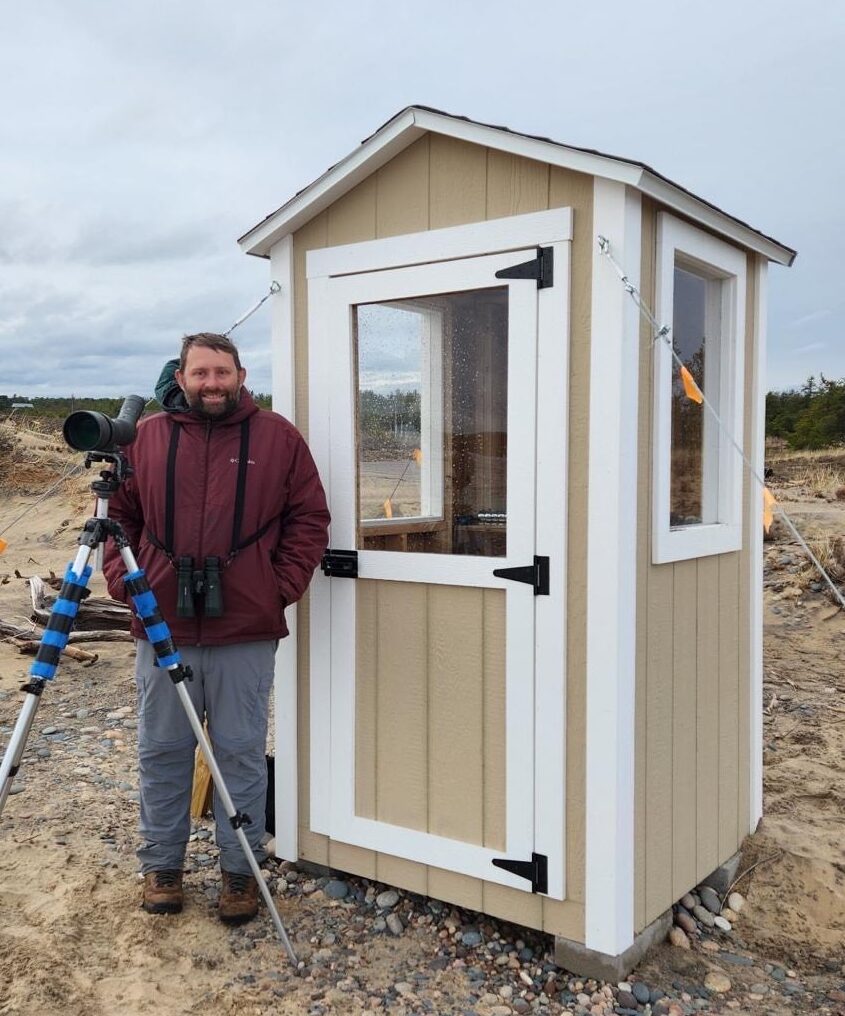
Clay Bliznick, MS: 2025 Fall Field Ornithologist
Clay worked as the WPBO fall field ornithologist in 2024 and is excited to return for the fall of 2025. He first took an interest in birds during a high school trip to Alaska, where he was struck by the flamboyance of magpies, the sleek, penguin-like appearance of alcids, and the sheer number of waterbirds residing along the coast. He dove headfirst into the world of birding while an undergraduate at the University of Kentucky, spending every free second exploring his home state for exciting new birds and places. Afterwards, he attended graduate school at Murray State University and wrote a master’s thesis examining the response of bird communities to environmental factors in Western KY bottomland hardwood forest restorations. For the last several years, Clay has traveled throughout the US working with birds in varying capacities, including nest monitoring of Florida Grasshopper Sparrows and Crested Caracaras, conducting surveys of Swallow-tailed Kite post-breeding roosts, and collecting breeding bird data in North and South Dakota for the Bird Conservancy of the Rockies.

